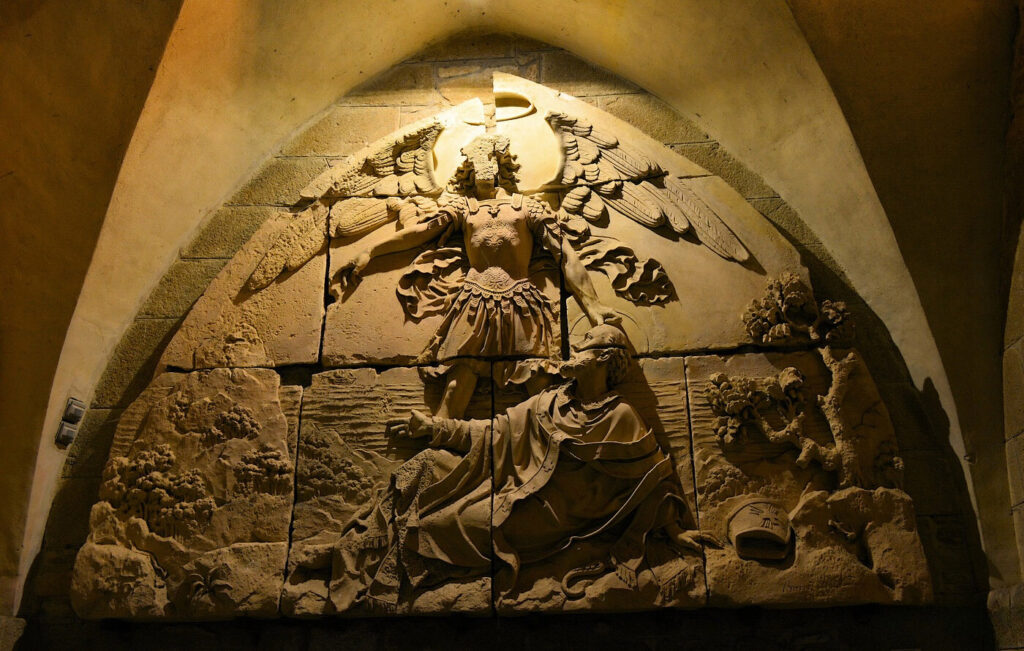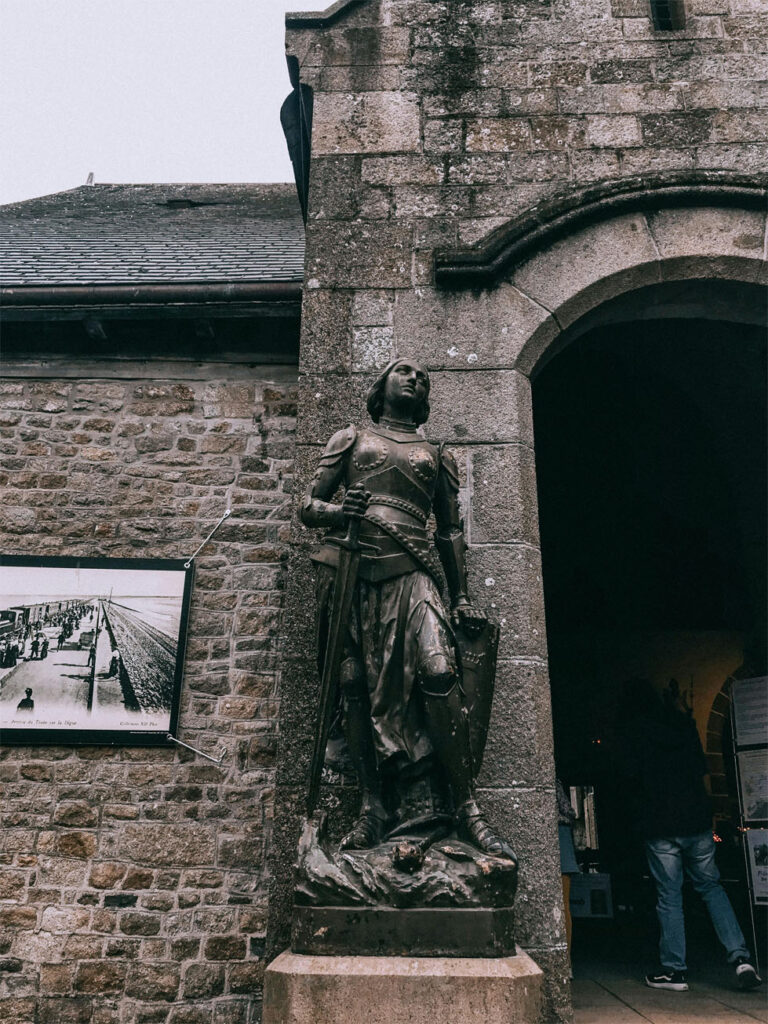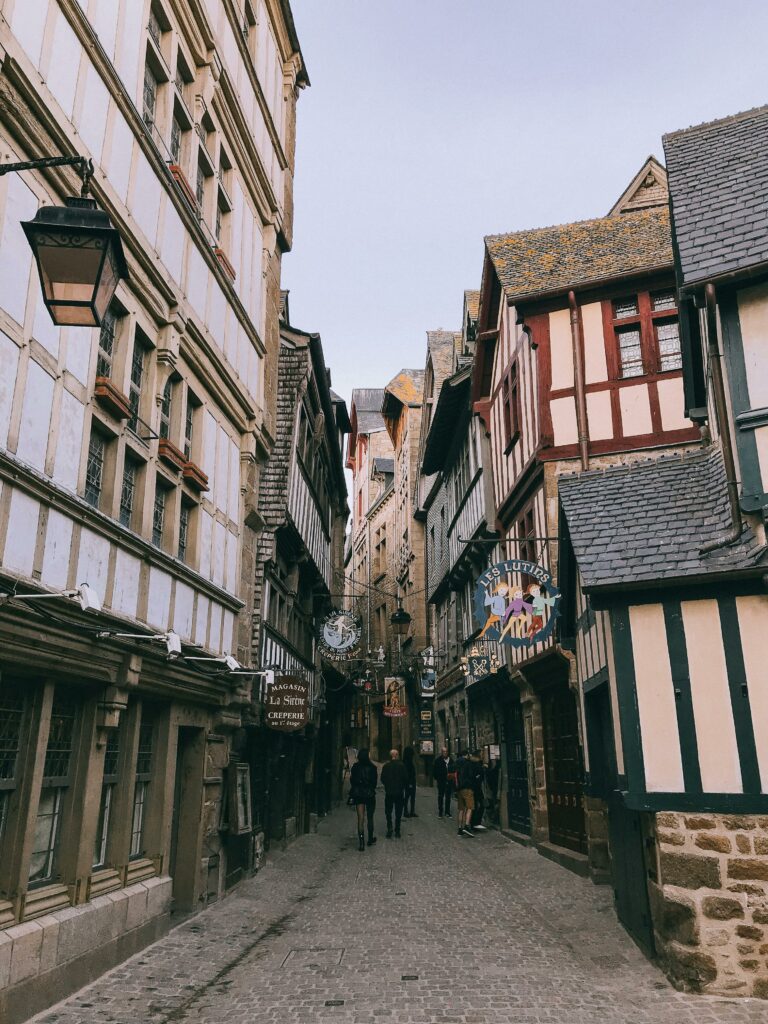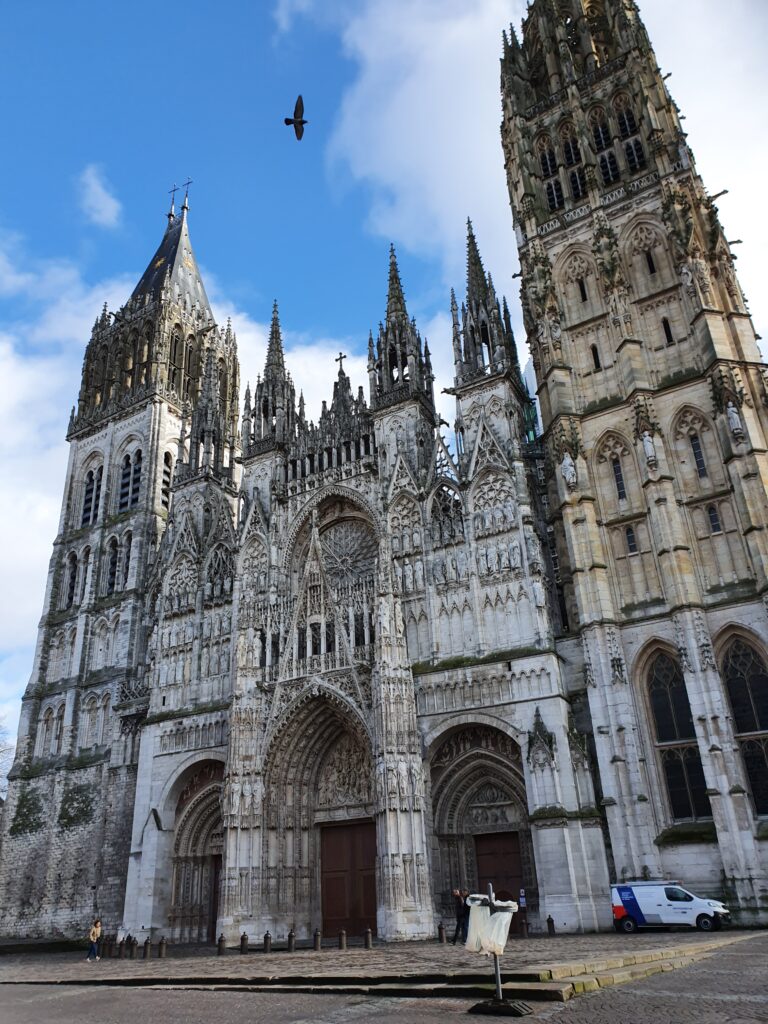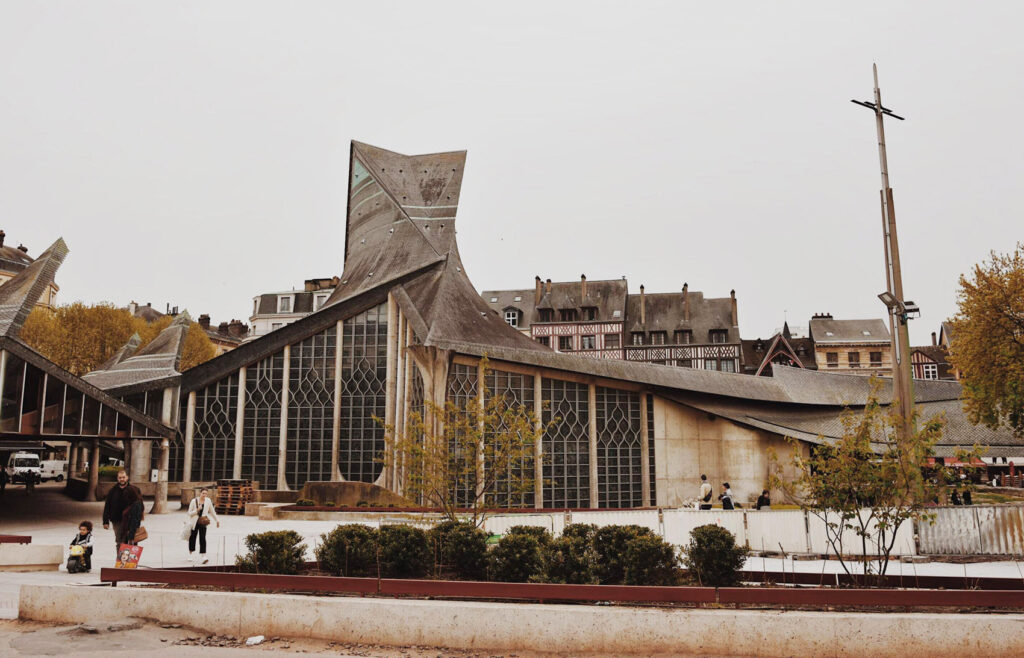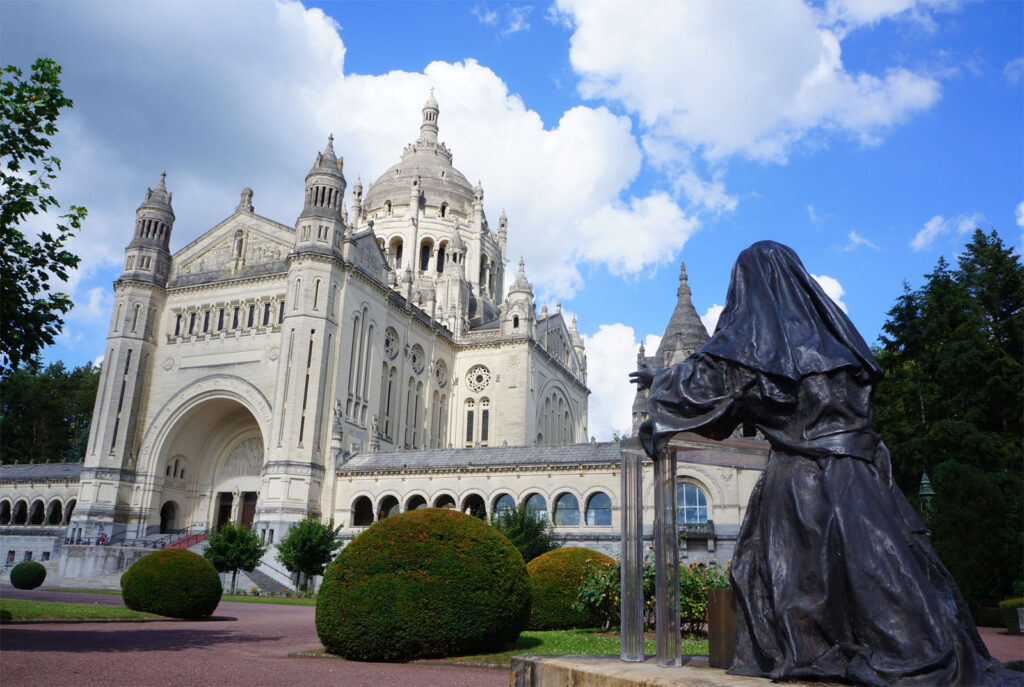Normandy, located in the northwest region of France, is a destination rich in history and spirituality, offering visitors a variety of significant religious sites.
When exploring religious tourism in Normandy, pilgrims are invited to immerse themselves in centuries of tradition and devotion while witnessing the historical events that have shaped the region.
Saint Michael the Archangel: Religious Tourism at Mont Saint-Michel
Mont Saint-Michel is one of France’s most iconic and impressive sites, renowned for its spectacular architecture and religious significance.
Located in the Normandy region on the northwest coast of France, Mont Saint-Michel is a rocky island that rises majestically from the vast estuary of the Couesnon River.
Its history dates back centuries and is deeply rooted in faith and religious devotion.
History of Mont Saint-Michel :
The history of Mont Saint-Michel begins in the 8th century when a sanctuary was built atop the island by order of Bishop Aubert of Avranches.
According to legend, the Archangel Michael appeared to Aubert and instructed him to build a church on the site. The initial sanctuary attracted pilgrims and monks, and over the centuries, the monastic complex was expanded to include an abbey and a village around the base of the island.
During the Middle Ages, Mont Saint-Michel became an important center of Christian pilgrimage in Europe.
Its isolated and imposing location in the middle of the sea made it a symbol of faith and divine protection for sailors and pilgrims traveling through the region’s treacherous waters.
The abbey flourished as a center of religious and cultural learning, attracting scholars and monks from across Europe.
Architecture and Pilgrimage Site :
The architecture of Mont Saint-Michel is truly impressive.
At the top of the island stands the majestic Abbey of Saint-Michel, a masterpiece of Romanesque and Gothic architecture.
The abbey is adorned with towers, cloisters, and a spectacular church, offering breath-taking views of the surrounding landscape.
The labyrinth of narrow streets and alleys of the village below the abbey is equally charming, with picturesque stone houses, shops, and restaurants that maintain the medieval charm of the region.
In addition to its architectural significance, Mont Saint-Michel is revered as a sacred site for Catholic faithful.
Over the centuries, thousands of pilgrims have made the journey to the Mount in search of healing, forgiveness, and spiritual guidance. The presence of the abbey and the aura of mystery surrounding the island have contributed to its reputation as a place of connection with the divine.
Contemporary Legacy
Today, Mont Saint-Michel remains a popular tourist destination, welcoming millions of visitors every year.
In addition to its religious and historical appeal, the site is recognized by UNESCO as a World Heritage Site, highlighting its cultural and architectural significance.
Although no longer an active monastic center, the abbey is still inhabited by a small community of monks and is a place of worship and devotion for Catholics.
Mont Saint-Michel is also known for its religious festivities, including processions and celebrations that attract faithful from around the world.
Rouen: Saint Joan of Arc and Religious Legacy
Rouen is indisputably the French city with the highest concentration of religious buildings per square meter!
The grandeur of the churches and the delicacy of the decorations are its main highlights. Let yourself be carried away by emotion as you contemplate these wonders!
Cathedral of Notre-Dame de Rouen :
The Cathedral of Notre-Dame de Rouen is a masterpiece of Gothic architecture and an emblematic landmark of the city.
Its construction began in the 12th century and continued over the following centuries, resulting in a magnificent structure with an impressive blend of architectural styles.
The cathedral is famous not only for its architectural beauty but also for its rich religious history.
It is here that Joan of Arc was tried and sentenced to death in 1431, before being burned at the stake.
The site where she was martyred is now marked by a black marble cross, attracting pilgrims and devotees who come to honor France’s national heroine.
Joan of Arc Pilgrimage Route
For devotees and enthusiasts of Joan of Arc’s history, Rouen offers a pilgrimage route dedicated to the French heroine.
This route takes visitors to the locations associated with Joan of Arc’s life and trial, including the Old Market Square, where she was executed, and the Church of Sainte-Jeanne-d’Arc, built in her honor.
Following in the footsteps of Joan of Arc through the city provides a unique spiritual experience, allowing visitors to connect with the history and legacy of this inspiring figure.
Saint Therese of the Child Jesus: life and work in the city of Lisieux
Lisieux is an important destination for religious tourism due to its connection with Saint Thérèse of the Child Jesus, one of the most popular saints of the Catholic Church.
The main points of interest in Lisieux are related to the life and legacy of Saint Thérèse, offering pilgrims and visitors the opportunity to learn more about her spirituality and devotion.
Basilica of Saint Thérèse
The Basilica of Saint Thérèse, also known as the Lisieux Basilica, is the main pilgrimage site in Lisieux.
Built in Romanesque-Byzantine style, the basilica is dedicated to Saint Thérèse of the Child Jesus and is a landmark of the city.
Its interior impresses with its colourful stained glass windows, elaborate mosaics, and a bronze statue of Saint Thérèse. Pilgrims often visit the basilica to pray and pay homage to the saint, whose relics are preserved in the main altar.
Carmel of Lisieux
The Carmel of Lisieux is a convent of the Discalced Carmelites where Saint Thérèse lived as a nun for much of her life.
Visitors can take a guided tour of the convent to see Saint Thérèse’s living quarters, her cell, the chapel where she prayed, and the garden where she spent moments of contemplation and prayer.
The Carmel of Lisieux offers an intimate view of Saint Thérèse’s spiritual life and devotion, allowing visitors to connect more deeply with her message of love and simplicity.
House of Saint Thérèse’s Parents
The House of Saint Thérèse’s Parents is another important attraction in Lisieux.
This childhood home of the saint, known as “Les Buissonnets” is preserved as a museum dedicated to the family life of Saint Thérèse and her parents, Louis and Zélie Martin.
Visitors can explore the rooms of the house, including Thérèse’s bedroom, recreated to reflect the environment in which she grew up.
The museum offers a unique insight into the daily life of the Martin family and how faith and devotion were central to their religious upbringing.
Saint Peter’s Cathedral
Although not directly related to Saint Thérèse, Saint Peter’s Cathedral is another important attraction in Lisieux.
This imposing Gothic cathedral is known for its stunning architecture and rich history.
Visitors can admire the elaborate stained glass windows, intricate sculptures, and impressive altar while exploring this significant place of worship in the city.
Religious Events and Festivals
“Les Fêtes Thérésiennes” During “Les Fêtes Thérésiennes,” the city of Lisieux is filled with religious, cultural, and festive activities.
Celebrations usually take place around October 1st, which is the date of Saint Thérèse’s death.
The events include special masses and religious ceremonies held at the Basilica of Saint Thérèse and other important places of worship in the city.
On these occasions, pilgrims and devotees from across France and the world gather to pay homage to the saint and participate in liturgical celebrations.
In addition to religious activities, “Les Fêtes Thérésiennes” also offers a variety of cultural and festive events.
Parades, theatrical performances, sacred music concerts, and art exhibitions are organized to entertain visitors and enrich the festival experience. The city comes alive with vibrant colours, music, and joy, creating a festive and spiritual atmosphere around the teachings and devotion of Saint Thérèse.
Alençon : Louis and Zélia Martin and birthplace of Saint Thérèse
The House of Saint Thérèse in Alençon holds great significance for devotees and admirers of Saint Thérèse of the Child Jesus, also known as Saint Thérèse of Lisieux.
Located in the city where Saint Thérèse’s family lived, the house is a pilgrimage site for Catholics and those seeking to learn more about the life and spirituality of the saint.
The house preserves the environment where Saint Thérèse spent part of her childhood, along with her parents, Louis and Zélia Martin, and her sisters.
Visitors can explore the rooms where the family lived, including Thérèse’s bedroom and her parents’ room, as well as personal belongings and photographs from that time. In addition to being a place of historical and religious interest, the House of Saint Thérèse also offers visitors the opportunity to reflect on the saint’s life and spirituality, marked by the “Little Way” and her devotion to simplicity, humility, and trust in God’s mercy.
Many pilgrims visit the House of Saint Thérèse in search of spiritual inspiration and to pray in front of the places that were significant in the saint’s life, such as her bedroom and the chapel where she used to pray.
The site is a living testament to the ongoing devotion to Saint Thérèse and a place where the faithful can feel closer to her, seeking her intercession and following her example of love for God and others.

